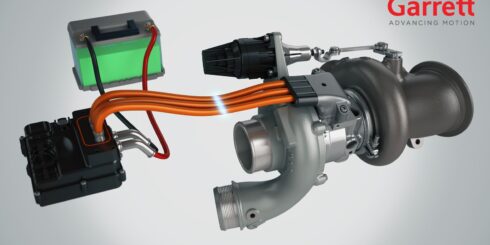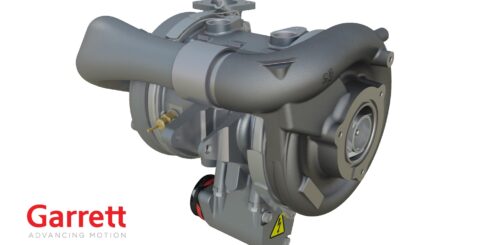Boosting powertrains to meet a changing heavy-duty emissions landscape
Nitrogen Oxides (NOx) and Particulate Matter (PM) reduction have historically been the focus for heavy-duty truck OEMs, but the next round of emissions regulations is placing a much greater emphasis on CO2.
As a result, commercial vehicle manufacturers around the world are turning to Garrett to develop the innovative engine boosting systems that will help create the low carbon powertrains of the future.
This trend toward greenhouse gas (GHG) reduction is underpinned by the European Union’s first-ever CO2 standard for medium and heavy-duty trucks, which mandates a 30 percent average reduction over the 2019 baseline by 2030 and a 15 percent improvement by 2025. At the same time, US standards demand a 27 percent overall vehicle reduction in CO2 by 2027 over a 2017 baseline, including a 5% cut in engine-out CO2. Meanwhile, China, India, Mexico and Brazil are adopting Euro VI equivalent standards from 2020 alongside GHG and fuel efficiency regulations.
It all adds up to an increasingly challenging commercial vehicle landscape, particularly as the downward pressure on NOx and other pollutants such as hydrocarbon (HC), carbon monoxide (CO) and particulates is also intensifying. The US Environmental Protection Agency recently announced its Cleaner Trucks Initiative which, in line with the CARB low NOx demonstration program, aims to cut NOx significantly by 2024/2027. Corresponding plans in the EU also require large reductions in tail-pipe out NOx.
Garrett, with eight decades of leadership in commercial vehicles engine boosting, is set to play a key role alongside its global customer base in engine programs dedicated to lowering CO2 output while simultaneously improving NOx control. Central to this will be turbo systems optimized to deliver better fuel economy, drive effective EGR and create the conditions for better aftertreatment.
For Garrett engineers, this means accelerating the pace of innovation across all turbo architectures, including wastegate, variable geometry and 2-stage systems. Latest developments include a super-durable Double Axle Variable Nozzle Turbine (DAVNT) turbo capable of operating above 800oC, plus a host of advances with the potential to deliver significant fuel economy (FE) benefits.
For example, ball bearing cartridges improve both steady state efficiency and transient performance and can yield a 1-2 percent increase in fuel economy, a new Garrett e-wastegate system helps deliver up to 2 percent, while the latest 2-stage series design could enable heavy-duty Miller cycle benefits, a solution that could improve efficiency by up to 6 percent.
In addition, latest compressor design updates are increasing flow range, enhancing rated power capability of the engine and enabling higher low end torque, with improvements in compressor efficiency of up to 3 percent at road load helping to maximize fuel efficiency.
Significant advances are also revealed in Garrett’s newly-developed DAVNT turbine stage.
These include:
- Improved turbine efficiency for road load operation, optimizing fuel efficiency at low flow while driving power density improvements at high flow.
- Reduced minimum flow to enable higher EGR rates at low load to reduce pollutant emissions, improve transient performance and enhance engine braking capability at low speed. The robustness of the setting has been a particular focus to minimize any flow deviation hat could reduce performance.
- Optimized vanes sets and turbine wheels to improve high cycle robustness while enhancing overall efficiency, thanks to advances in structure and fatigue calculations coupled with computational dynamics.
DAVNT architecture is now in its third generation and is central to many powertrain strategies in the on-highway market. The fully thermo-decoupled design allows the nozzle assembly to expand and contract freely radially and axially while offering improved aerodynamic performance for higher fuel efficiency, better braking capability and enhanced durability.
Turbocharging itself has been core to commercial vehicle performance since the Garrett® T15 turbo was fitted to the Caterpillar D9 crawler tractor in 1954. Fast forward to the year 2000 and the variable geometry turbine technology that transformed the passenger car market was applied to on-highway vehicles for the first time with the launch of DAVNT technology on the DDC series 50 bus engines.
Today, there are around 5 million Garrett variable geometry turbos boosting commercial vehicles around the world.
It’s a track record of success that leans on partnerships with more than 40 OEMs focused on exploiting the fuel efficiency, emissions reduction and performance benefits of Garrett technology – from regional manufacturers to global brands, on-and-off highway, covering the broadest range of engine sizes of any turbo business.














